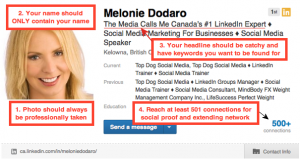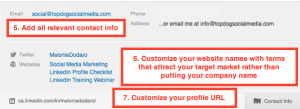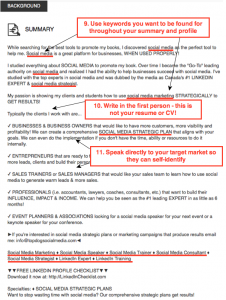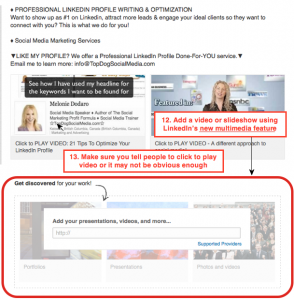Erik Qualman's Blog, page 591
August 16, 2014
App Makers Utilizing Social Media

Have you been thinking about App Development?
You’ve finally hit on that perfect idea for the perfect app and now what? Create it? Market it? Make money? Where do you market it? Why of course, social media.
You see it all the time on social media – marketing for apps. You can have your very own app showing up on social media, too.
However, first things first, you’ve got to create that App, than pepper social media with it.
Dial-in to Potential Profits
As this article “5 things to know about creating iPhone Apps” shows, you may just be able to jump on in….
An idea is enough! – Don’t worry if you don’t know the first thing about App creation. If you’ve got the idea, you can hire someone to create the app. There are developers out there who do this very thing for a living – the are good at it and they are fast. You supply the idea; they create it – you don’t have to know a thing about code. Just make sure you have all the right paperwork and copyright information. There are even some pretty smart kids out there who know how to create apps if money is tight.
Learn about app development – If you want to tackle this yourself, you’ve got to learn about iOS. Read about Xcode, Cocoa Frameworks and more. Learn about all that entails apps: the anatomy, buttons, labels, scrolling and tabs, how to navigate the app and connect it to the Internet (you may decide to contact that developer).
Make it relevant – What do people want? What do you feel is lacking in the app world? Fill in the blank: I wish I had an app for_______________. So – make it relevant. And then tie it into social media. Do you want it to show up on Facebook? Do you want people to Pin it? Think about who uses your product and where they are on social media.
Make it unique – There’s lots of everything out there – what you are doing has to stand out. Whatever it may be, make it unique. Why choose your app over another one? What will make social media users take a second glance at your app? If you find just the right niche, it will get notice.
Utilize video – Sure, screen shots are great, but sometimes video is better. Don’t you love hearing a song clip before you buy it off iTunes? Show your app in all its glory through a video (like YouTube and you’re hitting social media at the same time).
You can do this! Don’t let your good idea slip away.
Whether you develop your app or someone else does it for you, you may be the hottest thing trending on social media before long and your app will be on everyone’s iPhone!
Photo credit: Image courtesy of Stuart Miles at FreeDigitalPhotos.net
[image error]
August 15, 2014
Infographic: Retro Battlestations

If you look back at photos of what people were wearing in the 1980’s, there is a fair chance that most of us wouldn’t be rushing to try and replicate that fashion look today. The 1980’s was also a time when personal home computers exploded in popularity and gaming took on a new dimension.
We may not be nostalgic about some of the fashion from that time but mention Atari and Commodore 64 and many start to go dewy-eyed. This Retro-Battlestations infographic examines the startling leap in technology between then and now, and looks at some of their features which despite their primitive nature, somehow managed to get many of us hooked on playing space invaders from the comfort of our own couch.
Nostalgia seems to make us very forgiving about the technology we have to work with back then and a good example of our forgiving nature can be seen with the comparison between two Apple computers that were produced 28 years apart.
The difference between an Apple Macintosh from 1984 and an Apple iMac is not just the name change. The 1984 model would have set you back nearly $2,500 in return for a 9” screen and 128K of memory. A 2012 iMac would have cost you much less at just below $1,800, and you would have got 32GB of memory and a 27” screen.
Despite the introduction of specific gaming consoles like the Xbox and Playstation, many of us still have a soft spot for their pixelated predecessors, and over 60% of all gamers continue to spend some of their gaming time on their PC.
Take a walk down memory lane and wonder at the technological disparity between then and now. Very few of us would go near a machine on sale now that boasted a ROM basic operating system and 16 color graphics, but that’s not to say these machines of yesteryear are unloved.

Infographic Source: WhoIsHostingThis
[image error]
LinkedIn Helping Prep College Students for High Demand Jobs

 A growing number of companies and major corporations are looking for employees who have an impressive online presence.
A growing number of companies and major corporations are looking for employees who have an impressive online presence.
For job-hunting college students, this means expanding their social profiles on a professional level, which is exactly what LinkedIn is designed to do.
When it comes to finding a high demand job right out of college, here are just a few ways LinkedIn and social media can help:
It’s All About Presence
Job-seekers fresh out of college probably already have a pretty substantial social media presence.
But, in the eyes of employers, a professional online presence is worth its weight in gold. Sure, Facebook, Twitter, and other social sites are great for increasing online profiles, but LinkedIn is the most professional social site around.
If college students don’t have a thorough, active LinkedIn account, then they’re invisible when it comes to major, high demand employers.
LinkedIn members come from hundreds of industries with thousands of active hiring managers, which put LinkedIn job-seekers in the spotlight.
Optimized Online Portfolios
Paper résumés are a thing of the past, so if college jobseekers really want to get the most exposure possible, they need to have an online portfolio. LinkedIn allows users to not only post their résumés for the entire business world to see, but also optimize their professional portfolios.
Employers use LinkedIn every day to review the experience sections of potential candidates, including information like college degrees and previous work experience. With LinkedIn, job-seekers can put their best foot forward by showcasing their talents on a highly accessible social platform.
Search Potential Employers
There are two sides to the LinkedIn coin because job-seeking college students can also use the social site to search for potential employers.
Whether it’s perusing the site’s job posts or researching where friends and colleagues currently work, the article “LinkedIn helps college students break into high demand jobs” shows the edge one can get on a socially professional level.
Just like jobseekers can post their skills and expertise on LinkedIn, employers can also post the types of candidates they’re looking for based on experience and other factors.
Accessibility like this gives college students a unique opportunity to search the job market and get a feel for what jobs are available before beginning the interview process.
Professional Socializing
Speaking of the interview process, LinkedIn gives job-seeking college students an opportunity to exercise their socializing skills in a professional environment.
Whether it’s reaching out to acquaintances and colleagues or showcasing talents by uploading a personal website, LinkedIn gets the professional network ball rolling for soon-to-be grads.
Helpful Recommendations
Millions of professionals use LinkedIn every day to build their profiles among the online ranks. For college students searching for high demand jobs after graduation, LinkedIn makes it possible to build profiles through its recommendations feature.
With the recommendations feature, jobseekers can receive detailed reviews of their work ethic and talents from other users on the site.
These recommendations are featured on the jobseekers’ homepage as well as the recommendation writer’s page, which gives employers helpful insights on potential candidates.
When equipped with the networking power of LinkedIn, college students and post grads can prep for high demand jobs like never before.
Photo credit: Image courtesy of suphakit73 at FreeDigitalPhotos.net
[image error]
4 Ways to Let Your Brand’s Personality Shine on Social Media

The reach of social media is only limited by your imagination. You’re also much more likely to resonate with customers once you’re able to clearly convey your brand’s personality across social media platforms. Below, you can read about four ways to do that, plus get examples of the tips being used with real brands.
Show How You Support Peers
Taking a self-centered approach is common, and sometimes nearly unavoidable, in many industries. However, customers usually like to see a more human side of your brand. Showcase your genuine spirit by using social media pages to promote other notable companies or brands, and not just your own.
Branding is essential in the music industry. Although that holds true for large-scale acts like Katy Perry and Queens of the Stone Age, it’s also a necessary ingredient for bands that play in their local scenes. The Winter Line is a folk act that performs regularly in a Virginia town with a population of about 44,000 people.
Like most bands, The Winter Line relies on its Facebook page to spread the word about upcoming gigs. Just as often though, the band posts pictures of fellow musicians playing in the area. That not only proves by example how the band consistently supports fellow artists, but it uses imagery to encourage music lovers to follow that lead. Both of those factors are crucial, especially in an intimate music scene where news and opinions spread quickly.
Use a Hashtag That Relates to What Your Company Does
Hashtags work well for categorization purposes, but they can also help your brand’s voice be heard more clearly in a crowded marketplace. Have a brainstorming session to come up with a list of hashtags that are catchy and somehow related to your company’s purpose.
Playworld Systems sells commercial playground equipment and uses the tagline, “The World Needs Play,” within its logo. The company expertly expands upon that idea across its social media sites by relying upon the “#saveplay” hashtag. The idea is that playtime is getting increasingly overlooked, but it’s still as important as ever. That hashtag connects to what the company sells, and gives users some food for thought about how necessary it is for kids to have great spaces in which to play.
Share Industry-Specific Content on Social Media
Dell is one tech company that has used Google+ to its advantage in several ways. Specifically, the brand has hosted Google Hangouts that allowed customers to more easily troubleshoot issues. More recently though, the brand has capitalized on using Google+ to spread information users might appreciate. Taking inspiration from the first tip in this list, Dell not only gives the scoop on the latest news within its brand, but also branches out to share articles from other tech-savvy sources. Doing that with your brand is a fantastic way of showing how your company is tuned into the industry and customer base it serves.
Use Humor to Add Flair
The Charmin toilet paper company is a strong example of a manufacturer that doesn’t offer the most exciting or innovative product, but can still confidently make an impact on social media. Through websites like Instagram and Twitter, the brand popularized the “#tweetfromtheseat” hashtag. It encouraged followers to take snapshots and craft tweets that focused on an endearing type of bathroom humor. The effort got noticed by consumers, and also received a nod from an advertising organization.
You’ve now learned several ways to infuse your brand’s social media pages with a unique personality. Before trying any of them, make sure to have a solid grasp of your brand’s voice, and try to keep an open mind when figuring out the best ways to express it to a target audience.
[image error]
August 14, 2014
The Secret Sauce To Social Business

What exactly is Social Business? How would a PR agency, a marketing firm, a social media community manager, a sales vp, a customer, a vendor or an employee define social business? And, how is it different from terms like “Social Sales, Social Selling or Sales 2.0″? Is Social Business the new, hip and cool way to define what most perceive to be nothing more than social media, social media marketing or some sort of social networking?
Here’s what I think Social Business is not:
- Selling
- Marketing
- A Campaign
- Instantaneous
- Technology
- Complex
- Exclusively Online
You could say that Social Business is:
- Mobile
- Engagement
- Access
- Conversation
- Connection
- Internal and external (employees and customers)
and those are SOME the characteristics of social business. . .
The secret sauce of Social Business is the culture of a company or organization.
When you walk up to the counter at Chick-fil-A and they greet you by saying “how may we serve you today”, that to me, is social business. It’s listening to your audience, providing them something of value, delivering an experience they won’t forget and sharing that experience via story.
Social Media is just one platform that enables your customers, employees, vendors or CXOs to tell their story about a product, a company, a service or an experience that provided something of value or made an positive impact on their day, in their life, etc. Connecting with your audience, through the power of story, gets them to act. Good story is great business. (See Disney, Apple, Southwest Airlines, Zappos, etc.) Disney’s “social business” model has been in place for decades, long before social media came along. It reflects the culture of an organization, that has a compelling story to tell, delivers an exceptional experience for the customer and reflects intentional leadership from those at the top.
At it’s core, it must have a well defined VISION; the legacy?
What’s the MISSION; short term accomplishments?
What’s “THE WHY”? Why you do what you do (People buy the why; emotionally, psychologically and physically)
The Value offered ~ the story told ~ the experience delivered ~ and the ability to communicate why you do what you do reflects the culture of an organization and that culture is Social Business. It’s not a strategy, it’s not a tactic, it’s not a goal or objective. It is however intentional influence. It’s the DNA of any good leader or organization and it permeates through the walls of any company because it’s authentic and it’s simple. People buy simple and simplicity is the secret to any great sauce.
[image error]
How Social Media Advanced the Mobile-Gaming Industry

Back in the day if you were bored, you’d whip open that Nokia flip phone (the one with an actual physical keypad) to play a classic game of “Snake.” Using the numbers 2, 4, 6 and 8, sharp, right-angled turns would be taken to avoid bumping into your own pixelated wormy body moving around the one-inch screen. Oh, how the times of mobile gaming have changed ….
Nowadays, you open up Facebook on your iPhone to find random invitations to play Candy Crush. Social media-driven technology developments have advanced the mobile-gaming industry and evolved gaming into a community sport.
From Garden Snake to Python
Mobile games like “Snake” and “Pac-Man” were as basic as the original cell phones that housed them. Then came the introduction of the World Wide Web to your phone operated by the WAP (Wireless Application Protocol). This step opened up the opportunity and idea for multi-player gaming – foreshadow to the larger group aspect of mobile gaming today. Fast-forward through a few trial and errors along the way in mobile device technology plus the creation of App Store and you now have smartphones loaded with games supported by almighty social media.
Blurred Lines
With the mobile market booming in smartphone and tablet sales, game companies have had to adapt to a mobile-friendly audience, casting a wider net over people who normally would not consider themselves gamers. Progress in mobile devices paired with the continually dominant role of social media in our lives, has led the world of gaming towards an overwhelming amount of change and because of this natural convergence between social, mobile and gaming, lines have been blurred between “social media user” versus “gamer,” sometimes interchangeable terms.
For instance, the board game Scrabble, adapted to a mobile app called “Words with Friends,” encourages social interaction amongst players. Competitors connect using the smartphone application and/or corresponding Facebook app, stay in constant communication, and have the chance to share scores and opponents they beat with their whole newsfeed.
Sharing is Caring
As humans, we feel the need to share our moments and victories with an invested audience. Games are innately structured so that participants can execute a story from start to finish. Coincidentally, social media is quite possibly the best story telling platform ever to exist and has revolutionized gaming by making it easier to create a sense of community. Gamers can support one another by participating in each other’s games to help their virtual journeys come to fruition – your friends that join you can help unlocked levels and gain tools needed to get through difficult obstacles.
Great Expectations
The nudge from social media has raised players expectations to expect a highly optimized user experience overall. In order to operate these multi-media games smoothly, the installation of top-notch graphics processing units in mobile devices has become a standard requirement for service carriers. This tech advancement provides the ability to process complex game visuals, making the display appear more real than ever imagined while also allowing its social function to run uninterrupted.
Traditional gaming consoles are unlikely to go away, but what has ultimately progressed for gaming due to social media is an expansion in audience. There will always be gamers who prefer to battle it out on their Xbox 360, PS3 or Nintendo Wii, but what social media has pioneered is a pathway for a new type of gamer via mobile devices – the social gamer. This has changed the landscape for video game makers and pushed them to develop games that apply to a wider demographic, thus producing mobile friendly versions of popular games. In result, the mobile-gaming industry is building a true integration between entertainment, technology and community.
[image error]
August 13, 2014
Should Your Brand Be Marketing On Snapchat? (Infographic)

Snapchat is sky rocking in popularity and controversy. Teens and marketers laud it—parents, pastors and regulators abhor it. The tools popularity is attributed to its ability to allow users to re-capture a little bit of their privacy while still being able to share moments with others. Many marketing professional still have questions about whether or not it is worth investing their time in money in adding the platform to their overall strategy. This infographic helps to answer some of those questions.
This is a cross-posting. This post orignially appeared on Business2Community.com on August 12th 2014. Original Posting: http://buff.ly/1sCiYwM
To snap, or not to snap? That is the question many brands and marketers are currently asking. Snapchat has been around since 2011 but the direct messaging app is suddenly grabbing marketers’ attention thanks to their heavy-hitting stats: 30 million users, 80% of which are between 18 and 25 years of age. In their 2014 marketing deck, Snapchat claims users send over 700 million photos and videos on a daily basis.
While these staggering figures are hard to ignore, successful brands know they can’t be everywhere and need to prioritize their social marketing efforts. Snapchat is an obvious choice for brands focused on the Gen Z audience but brands with an older demographic may want to consider current limitations and marketing opportunities within the app before onboarding.
Brands like DoSomething.org, 16 Handles and Seventeen Magazine are already doing impressive marketing on Snapchat. Take this infographic quiz to find out if Snapchat is a good fit for your brand too.
[image error]
August 11, 2014
Tweeting Their Way Off The Team: Social Media and College Recruits

As Erik Qualman wrote in his latest book, What Happens in Vegas Stays on YouTube, privacy is dead. We’ve seen this new reality impact every industry, and most notably in sports. This story is just one more example of how college athletes need to learn how to protect and produce a strong digital reputation. If you are a coach or college athletics administrator contact our team to find out more about our digital reputation training options.
The following post was first published on FOX Sports: http://buff.ly/Xd1H0r.
At St. Paul’s Episcopal School in Mobile, Alabama, the high school that produced Crimson Tide quarterbacks AJ McCarronand Jake Coker, there’s a new preseason ritual for football players: the social media talk.
It’s about more than minding their manners. Coach Steve Mask warns players not to post about injuries, which can scare away recruiters. Committing on Twitter to a school is also discouraged — one recent former player tweeted commitments to four different schools without informing any coaches.
”He came across as being not reliable,” Mask said. ”He gets a little joy out of the attention, but it’s not worth it.”
This season, Mask is taking his players’ online personas so seriously that he’s assigning an assistant to monitor their accounts. As college programs increasingly use Twitter, Instagram and other social media accounts to evaluate a player’s character, one wrong comment can cost a scholarship offer.
That was the case recently at Penn State for offensive line coach Herb Hand, who took to Twitter recently to vent his frustration with a recruit gone bad online.
”Dropped another prospect this AM due to his social media presence … Actually glad I got to see the ‘real’ person before we offered him,” Hand tweeted.
At Penn State media day last week in State College, Pennsylvania, Hand said that his wife scolded him for the tone of the tweet. Cruel, maybe, but fair.
”You want to recruit guys with strong character,” he said. ”Somebody messaged me, ‘Sometimes kids are worried more about being a character than having character.”’
Yes, teens do tweet the darndest things, but Hand and other coaches say it’s usually fairly easy to differentiate between a cringe-inducing post and one that raises a serious red flag on a prospect.
”There’s a difference though when you’re talking about information that may be degrading to women, referencing drug use, and anything that has to do with cyberbullying and stuff like that. There’s certain things you don’t want to be part of your program,” Hand said.
Hand, who is one of the most active and engaging college coaches you’ll find on Twitter, is not alone in cutting off a recruit because of the player’s use of social media.
”It’s happened this year and this recruiting class,” Duke coach David Cutcliffe said. ”It’s just insane what some of them think’s OK. When I know it’s them and I read it and I see some of the things out there, if I’m on the road, I’ll call a coach — let his high school coach know we’re no longer interested. And I’ll call back to (Duke director of football relations) Kent McLeod or the people in the office and say I want him dropped off the database. No more mail. Nothing.”
NCAA rules regarding contact between recruits and football coaches have become more restrictive in recent years. Coaches can’t text recruits and opportunities to meet face-to-face have decreased. As social media has become more ubiquitous, it has helped coaches fill the information gap in recruiting.
Arkansas coach Bret Bielema said social media is now part of his standard checklist for recruits.
”He’s got to have a GPA that I can relate to, an ACT or SAT score or a pre-ACT score, and the third box is for social media,” Bielema said.
”I distinctly remember a player last year who signed, was a big-time kid, had an interest in us, and his Twitter handle was something that I can’t repeat in here. I just kind of said, what are we doing here? This is about as obvious as it gets about what kind of thing we’re dealing with here, so we backed out altogether.”
Hand said he tries to educate high school coaches who might be behind the curve in online communication. And he often tries to educate players he’s recruiting about how to avoid social media missteps.
”If you talk to a guy and he doesn’t adjust things, that’s another red flag for you,” he said. ”If they’re not going to take coaching on this, what are they going to do on third-and-short when you need them to make a block and they kind of do their own deal?”
Bruce Rollinson, who is starting his 26th season as coach of southern California powerhouse Mater Dei High School, said he added the social media talk to his routine about three years ago, borrowing some of the dos and don’ts USC gives its athletes.
”Don’t harass anybody,” Rollinson said, focusing mostly on the don’ts. ”Don’t bring up race, religion, sexual orientation and physical conditions.”
South Carolina freshman defensive back Chris Lammons said he got the message in high school and cleaned up his Twitter act, despite what his friends were doing.
”In the transition from being a little kid to a man, that’s the thing you have to do, because when you’re growing up, you probably want to get a big time job somewhere and they look back at your Twitter account and they see the things you’re putting out,” Lammons said.
[image error]
21 Steps to the Perfect LinkedIn Profile

I thought this post would be great to share with our readers. It provides 21 helpful tips for anyone trying to beef up their LinkedIn presence. This article was written before LinkedIn offered a publishing tool, so I have also included a few other posts that our Socialnomics team has written in the last year about LinkedIn.
LinkedIn’s Best New Tool: Professional Publishing Platform | Socialnomics http://buff.ly/1A7Rr7p
How To Get A (Strong) Recommendation on LinkedIn | Socialnomics http://buff.ly/Xd0m9M
Become More Social in Boosting Your Career | Socialnomics http://buff.ly/1A7S017
The following post was written by Melonie Dodaro and originally featured on Top Dog Social Media: http://bit.ly/1lP3IoS
1. Photo Should Always Be Professional – Take the time to get a real professional picture taken by a photographer. Anything else doesn’t leave nearly the same impression so get off to a good start with a great headshot.
2. Your Name Should ONLY Contain Your Name – Avoid adding any additional titles, acronyms or credentials. Keep it clean and concise!
3. Your Headline Should Be Catchy & Have Keywords You Want To Be Found For –Create a headline that captures your target market’s attention to encourage them to check out your profile.
4. Connect With At Least 501 People – The reason I suggest this is because LinkedIn will show how many connections you have until you hit 500. People like to connect with “connected” people.
5. Provide All Necessary Contact Info – Not everyone will want to message you on LinkedIn when they find your profile so it’s good to give multiple options. I chose not to put my address and instead put an alternate email – you can do the same, if you want but make sure you at least have an email!
6. Customize Your Website Names – On my own profile, I didn’t just put my company name or my website names. Instead, I used words that would be more attractive to the type of person I aim to attract.
7. Customize Your Profile URL – When customizing your LinkedIn profile, aim to just have your full name without anything else. If you have a more common name (sorry, John Smith) then you might have to resort to a slight modification.
8. Update Your Status Daily – One of the pillars to social media success is consistency so be sure to update your LinkedIn status daily with something that provides value to your target market.
9. Keyword Load Your Summary & Profile – Notice again how I’ve strategically placed my chosen keywords through my profile and summary. Be careful not to overdo it or else your profile loses it’s impact.
10. Write In First Person – Your LinkedIn profile is not your resume so make sure you are always writing in first person.
11. Speak Directly To Your Target Market – Always write so that you’re speaking directly to the type of person you are trying to attract/sell to. Every word should be positioned with that goal in mind!
12. Add Video To Your LinkedIn Profile – There’s no better way to introduce yourself than with your own voice and face. Fortunately their latest update has made adding video or slideshow presentations to your LinkedIn profile ridiculously simple by allowing you to paste a link instead of the grueling process it used to be.
13. Tell Them To Click Play! – It might not be obvious enough that the video on your profile is actually a video so be sure to actually tell people to click play in the text area.
14. Skills & Expertise Should Be Filled With Keywords – This is a keyword haven on your LinkedIn profile so think about every skill you promote through your business and list it here. Everything you put here will show up in your Endorsements section so choose carefully!
15. Use The “Projects” Section To Promote Products – This is a great section to showcase products you are selling currently. Offer a free report, white paper or something that will give value to your target market to drive traffic and opt-ins for your website. I have also used it to promote a couple free reports and checklists that I have available for download.
16. Keyword Load Your Current & Past Work History – Notice how in my profile I used keywords like “Social media speaker” and “social media trainer”. These are some of the keywords I want to be found for.
17. Use Keywords When Filling Out Your Experience Section – See explanation for #6. Same drill!
18. Have At Least 10 Recommendations – This is key for building credibility. Do whatever you need to do to get your first 10 recommendations, as they are paramount to distinguishing you from competition online. Read this blog for tips on getting more LinkedIn recommendations.
19. Add Volunteer Experience – Make sure you add any volunteer experience or causes you support as your LinkedIn profile has a special section for it.
20. Fill “Honors & Awards” With Significant Media Attention – If you don’t have a lot of awards that are relevant to your business, I would encourage you to use this section to promote any media or press attention you’ve received.
21. Join 50 groups – You can join a maximum of 50 groups on LinkedIn so take advantage of every one of them. If your business is primarily local then start by finding relevant local groups for your industry or wherever your target market is likely to be.
[image error]
NFL Scoring with Social Media

Excitement is in the air for the start of the 2014 NFL season!
You may be seeing promotions in more places this year, including more and more social media. How could the NFL overlook social media for league and team promotions?
They really can’t as social media is a force to be reckoned these days for advertising and promos.
Everyone’s on it! Take a look…
• According to UncommonThinking, the NFL is ahead of the NHL and NBA in integration of social media.
• The Atlanta Falcons are ahead of the game with their Twitter page and all of the different facets it covers, from cheerleaders to players to general news.
• Twitter seems to be the biggie in the social media world for the NFL.
• Individual teams seem most adept at using social media – for instance, the Denver Broncos site has icons to Twitter, Facebook, Instagram, even Pinterest,; the NY Giants have all the same except no Pinterest.
• Message boards are big – fans can get in and communicate together – everyone can put in their 2 cents.
• Most teams have their own mobile apps so fans can get up to the minute updates and information wherever they are. Forbes says that some teams, like the Patriots, are teaming with companies like SessionM that can increase user involvement and make the fans feel even more part of the game.
• Teams have social media directors to keep everything up to date and a constant stream of communication going.
• You can get updates and notifications at your whimsy, just be sure to turn them off if you’ve got to watch the game in delay mode!
What about you as the fan – how can you promote your team?
• Let’s stay on the digital page for just a bit longer and decorate your desktop with digital team wallpaper. Most of the teams have this available for downloading.
• As the piece “Custom floor mats for the NFL fanatic” shows, you can greet your guests at your game party or simply be there for you anywhere in your home. Decorate your man cave with one and you can skip all the Pinterest worthy decorations. It’s fan memorabilia that also has a practical edge. You’ve got tons of choices and can customize one of these floor mats as much as your imagination will allow.
• Flags are another great way to announce your team loyalty. Hang one proudly outside your house on game day or keep it flying year round.
The season is kicking in – be ready!
Photo credit: pregame.com
[image error]














